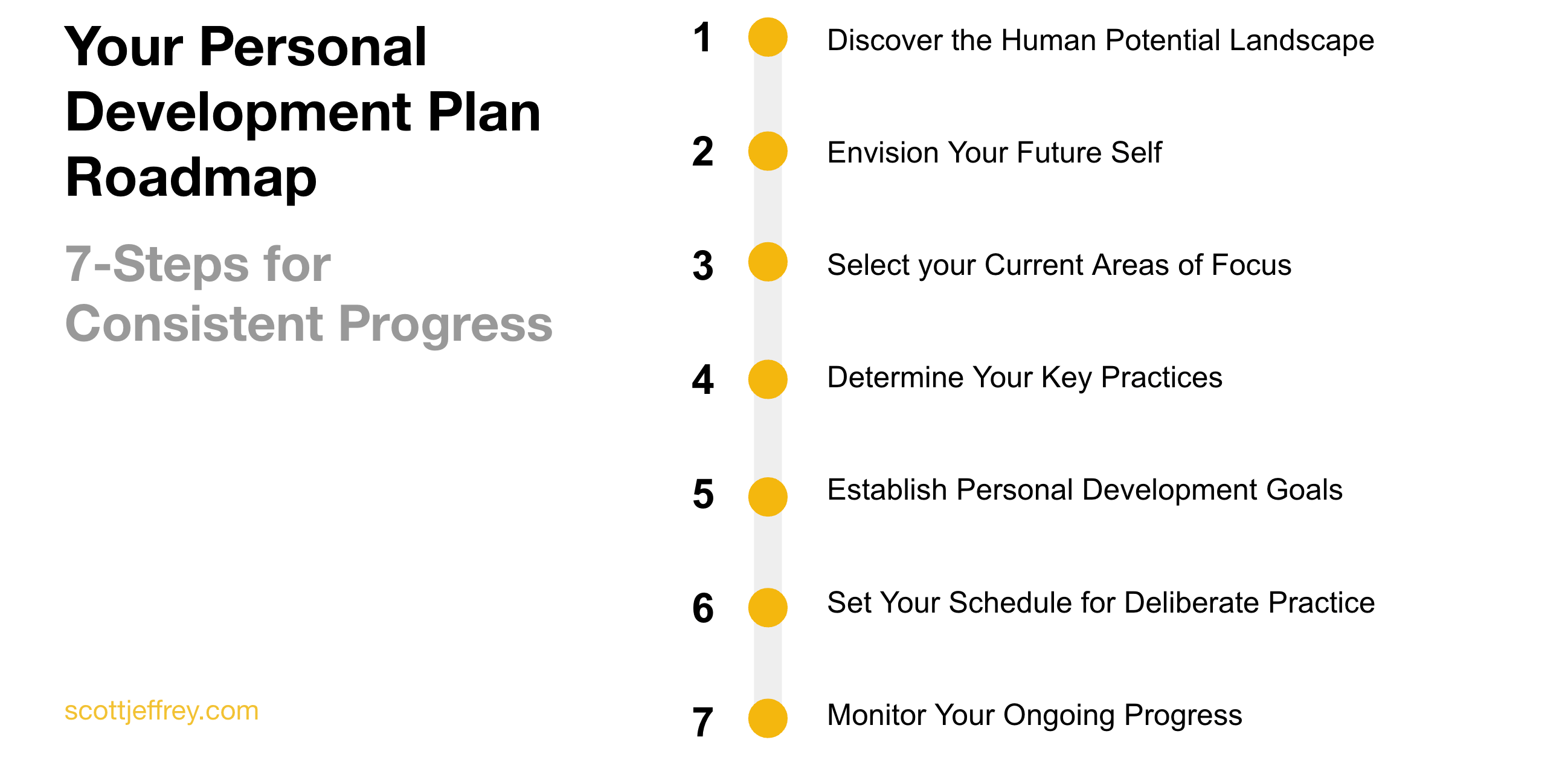

Overview: This in-depth guide provides a comprehensive 7-step roadmap to create a customized personal development plan template to help you actualize your true potential. It also provides a personal development plan template you can use (with examples).
I leaped into the personal development world with a copy of Tony Robbins’ Personal Power program in the early 1990s.
If you’re old enough and living in the States, you know the one I’m talking about (late-night infomercials).
I was 18, and this audio program made a measurable difference in my outlook and behavior.
From that moment onward, I was hooked on personal development.
I jumped from seminar to seminar, book to book. Investing every possible moment I had, I covered a lot of ground in my first five years.
Reflecting over 30 years on my journey, I now see I was missing several vital ingredients essential for long-term, healthy development back then.
In this guide, I will share with you lessons learned and provide a roadmap for crafting a powerful Personal Development Plan. (Also, toward the bottom of the guide, you can download a personal development plan template and an example plan.)
A personal development plan is like a business plan for an individual. A personal development plan creates a roadmap for an individual’s growth in key categories of life and work.
There’s no set formula or template for creating a personal development plan.
Your plan can be a half-page, a full-page, or 20 pages long. It’s entirely up to you.
To clarify, “individual development plans” are generally more geared toward career development than a personal development plan (or “self-development plan”), but they all share common attributes.
The primary question a Personal Development Plan helps answer is:
Where am I going to place my available time and attention?
If you examine most people over a decade, you’ll observe little or no change in their development and behavior.
Development implies a permanent change in the structure of your being including your body, brain, or consciousness.
Just because you adopt a new habit, for example, doesn’t mean you have or will grow from it. If this new habit leads to internal growth over time, however, it will facilitate your development.
It’s all too easy to believe we’re developing when we’re not. I know I deceived myself for many years and there’s evidence of this throughout personal development communities.
Reading books in this genre, for example, doesn’t mean you’re developing. You might just be acquiring more ideas.
Personal development books can potentially provide a roadmap for development in certain areas, but real development comes through practice and repetition.
Our behavior and the development of skills, aptitudes, and desired tendencies are where we can observe signs of permanent change.
Self-help implies there’s something wrong with us.
The multi-billion-dollar self-help industry profits by subconsciously communicating these “deficiencies” to its unsuspecting audience.
Actual personal development is how humans realize more of their innate potential.
In an ideal environment, this process happens naturally.
Because this perfect environment doesn’t exist in society, the call for personal development is an individual’s choice. It’s up to each individual to say “yes” to their hero’s journey.
When you don’t have a vision, a plan, or a goal, where does your attention go?
For most people, attention goes to entertainment and distraction. Sight, sound, and motion captivate our brains.
Television series, films, video games, social media, sports, and stock prices hook the primitive parts of our brains.
Even if you’re an overachiever who defines yourself by accomplishments and external status, your attention likely gets fixated on more work, higher productivity, and making more money. That’s fine, but this effort doesn’t necessarily support our personal development goals.
When entertainment, distraction, and workaholism consume our attention, something doesn’t feel right within us.
We may not identify it, but a deeper part of us isn’t fulfilled.
Psychologist Abraham Maslow noted that when individuals mainly focus on meeting their basic human needs like physiological needs, security, fitting in, and being liked and respected, they become neurotic.
Self-actualizing individuals, in contrast, are more focused on their growth needs.
Their motivation stems from an internal directive called intrinsic motivation instead of being driven by external forces. (All of our basic human needs are external.)
To have a full and meaningful life requires us to open to deeper aspects of ourselves.
A personal development plan can help us do just that.
But most people don’t know what’s available to them. I certainly wasn’t aware of the options when I started my journey.
Youthful enthusiasm and naivete guided those early years.
If you go to personal development seminars or read books in this genre, you may only think within the confines of the illustrations these resources provide.

Before we jump in, here’s a quick overview of the steps for creating your personal development plan:
Step 1: Discover the Human Potential Landscape
Step 2: Envision Your Future Self
Step 3: Select your Current Areas of Focus
Step 4: Determine Your Key Practices
Step 5: Establish Personal Development Goals
Step 6: Set Your Schedule for Deliberate Practice
Step 7: Monitor Your Ongoing Progress
Step 1 is what’s missing from many people’s approach to personal development.
So we’ll start our journey with a larger vision for our human potential.
Note: Toward the bottom of this guide, you can download a personal development plan template based on this roadmap.

One thing I was missing from my personal development journey was a roadmap of the terrain. How can you navigate through your development without a map?
Every good explorer has one. Such a map shines a much-needed light on the diverse areas of our potential.
A reliable map of human potential wasn’t readily available in the early 90s.
The fields of transpersonal psychology, developmental psychology, integral theory, and neuroscience, however, were converging on one.
Theorist Ken Wilber played a major role in synthesizing many fields of research into a cohesive whole.
In my experience, I’ve found it helps to take an integrated approach to your personal development plan.
That is, know your menu of options so you can select from multiple areas that interest you.
To create a map for our development, we need to know the categories available to us. These categories include:
Let’s look at each of these categories in more detail.
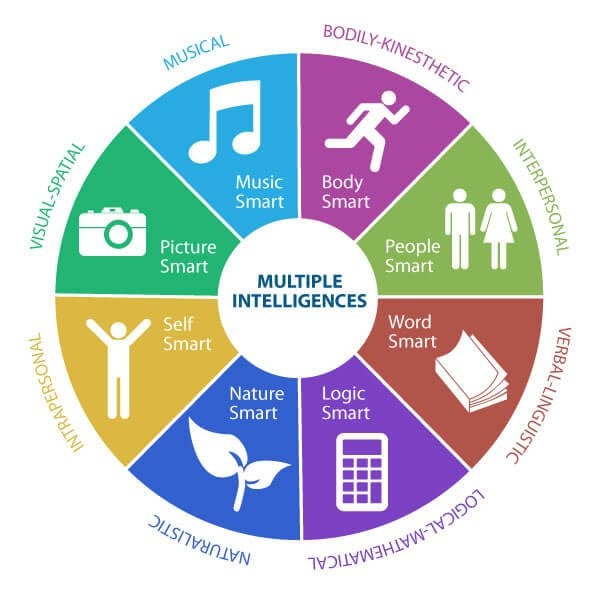
Gardner’s Theory of Multiple Intelligence
While we used to associate “intelligence” with IQ; we now know there are many forms of intelligence.
One popular model comes from the pioneering work of Harvard psychologist Howard Gardner and his Multiple Intelligence theory. 1 Gardner, Frames of Mind: The Theory of Multiple Intelligences, 2011.
In Gardner’s model, there are now nine lines of intelligence:
Logical-mathematical intelligence: logic, abstractions, reasoning, numbers, and critical thinking. This intelligence is associated with IQ and intellectual aptitude. This line is also referred to as cognitive intelligence as explored in Jean Piaget’s research.
Linguistic intelligence: words, languages, reading, writing, telling stories, and memorizing words.
Intrapersonal intelligence: to know oneself including one’s strengths and weaknesses, emotional triggers, and motivations. One’s ability to be introspective and self-reflective. Psychologist Daniel Goleman popularized this as Emotional Intelligence.
Kinesthetic intelligence: one’s ability to control one’s body and one’s skill in using it. Also called body intelligence or body-mind connection.
Musical intelligence: sensitivity to sounds, pitch, rhythms, tones, meter, melody, etc.
Visual-spatial intelligence: spatial judgment and the ability to visualize and imagine with the mind’s eye.
Interpersonal intelligence: sensitivity to others’ moods, feelings, temperaments, motivations, and their ability to cooperate with others. Goleman popularized this as Social Intelligence.
Naturalistic intelligence: sensitivity to one’s environment; the ability to recognize flora and fauna; nurturing and relating to one’s natural surroundings.
Existential intelligence: sometimes called spiritual intelligence; relates to one’s understanding of oneself concerning reality or the cosmos.
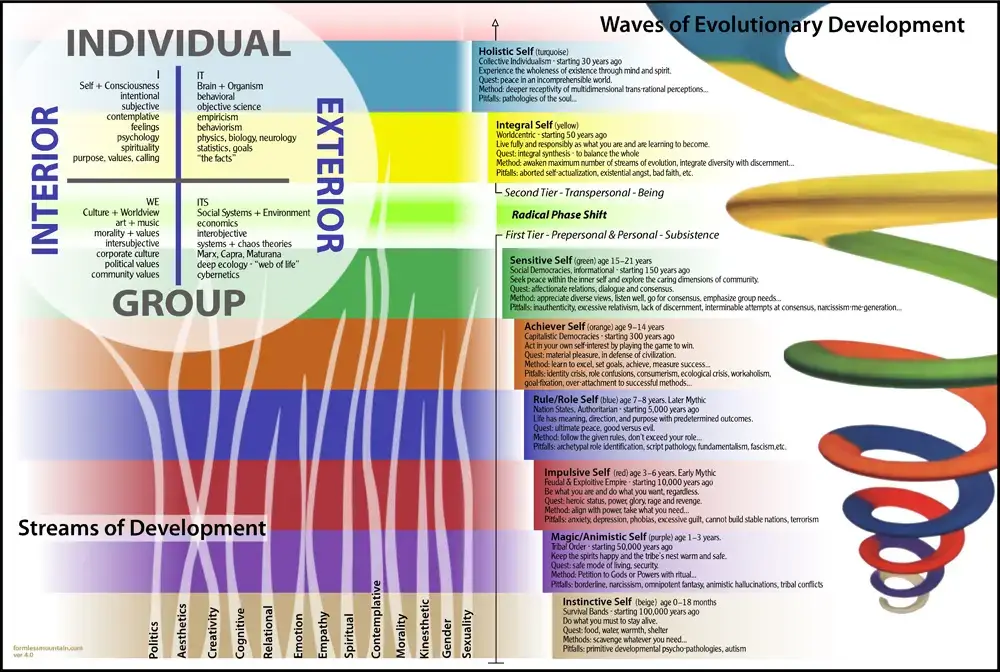
Integral Theory’s “AQAL” Model of Human Development
Other developmental researchers have studied the stages of growth in morals, values, worldviews, emotions, contemplation, spirituality, needs, and psycho-sexual development.
Do you see the diverse range of our potential?
In Integral Life Practice, Ken Wilber, et al. group these “streams of development” into four categories:
We each have a different base level of development in each line of intelligence and an innate potential we can realize through deliberate practice.
Our environment often thwarts this potential in early childhood. As adults, our responsibility is to resume this upward march. A personal development plan can help us with that!
Skill development is a broad category that includes areas where you show interest and/or ability. You can develop skills for personal or professional reasons.
There are skills in problem-solving, communication, collaborating, drawing, computer programming, bookkeeping, writing, analyzing, martial arts, persuading, musical instruments, negotiating, learning, presenting, goal setting, listening, managing, planning, reasoning, and predicting, to name only a few.
All skills are associated with at least one line of intelligence listed above. With sufficient interest, practice, and the right methods, individuals can develop any skill.
One way to get more clarity on your natural skills is to take the free VIA Character Strength survey. Your natural strengths often translate to specific skills.
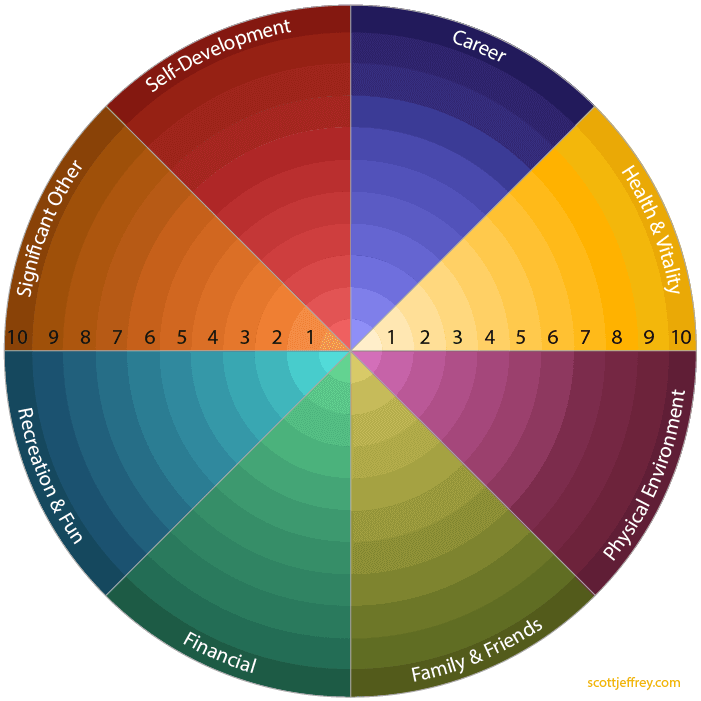
The Wheel of Life Exercise
In your pursuit of personal development, you may have come across the Wheel of Life.
The Wheel of Life is a standard tool that coaches use to illustrate the various categories of one’s life, measure an individual’s status in each area, and set goals to improve in those areas.
Your wheel might include physical health, relationships, social, finances, professional, personal growth, spirituality, creativity, and fun.
The message behind the Wheel of Life is that development occurs through conscious effort and being intentional about how you grow within these key categories.
Who doesn’t have behaviors they would like to change?
We all have set patterns of behavior that get entrenched by unconscious repetition.
For lasting change to occur, we repeat the new habit or behavior over time under various conditions.
The time necessary to install a new habit varies; research suggests it takes 66 days on average. 2 https://www.spring.org.uk/2009/09/how-long-to-form-a-habit.php I’ve found that it’s usually much less.
Why do many personal development programs fail to produce long-term results? Because these programs are “one size fits all.”
Research shows there is a range of psychological types. In the Enneagram system, there are nine primary types and nine levels of development within each one.
Each type has varying propensities, habitual patterns, strengths, weaknesses, fears, and potentials.
If you want to create an effective Personal Development Plan, be sure you’re aware of your psychological type. Each type has a different pathway to higher development.
As a business coach to high-performing entrepreneurs for over 25 years, I went through and used most (if not all) personality tests on the market, including popular ones like Myers-Briggs (MBTI), Human Design Engineering (HDe), and DISC.
In my opinion, the Enneagram is the most efficacious, robust, and useful. (MBTI and HDE are insightful too.)
You can take a free Enneagram test here. You can find scientifically validated paid tests online as well.
After you get your results, read more about your type and see if it resonates. Then, look for ways to develop your type. (On the Enneagram Institute website, they offer “Personal Growth Recommendations” for each type.)

Consider what the above information means about our potential: Developing any line of intelligence gives us greater sensitivity to the world around us.
We can now process information in new and deeper ways. Every time we grow in a line of intelligence, we perceive the world differently.
We are more aware than before. We have greater sensitivity to the world around us. Our possibilities are remarkable to ponder.
Nietzsche believed it was our destiny to be Ubermensch or Superman. An Ubermensch is an integrated or whole human being accessing his full potential.
Numerous researchers in developmental psychology have come to a similar conclusion, calling the final stage of development “Integrated.”
Maslow called this stage of development self-actualization and later, self-transcendence.
Your vision (and personal development goals) will inspire you if it is true to who you are.
Sometimes we create a vision based on what we should want or what we hope will gain approval from others—our parents, significant others, colleagues, or friends). Such a vision will lack inspiration and will feel meaningless to us.
Don’t worry about creating a “perfect” vision or the “right” vision. Just craft a sentence or two that inspires you right now.

In Step 1, you see a diverse range of options available. Learning about these options can be exciting, but it can also be overwhelming. If you nailed your vision in Step 2, you have more clarity.
Now, depending on your level of clarity, Step 3 can either be the easiest or the most difficult part of this process.
Even when you have a compelling vision for your future self, selecting areas of development to focus on can challenge us because we have limited time and countless options.
We can’t do it all. Creating an aggressive or complicated personal development plan with many goals backfires over time. I can attest to this from personal experience.
An aggressive plan will create additional internal resistance that undermines your efforts.
Over-planning sets you up for failure and discouragement. Eventually, you will burn out (lose motivation) and abandon your plan.
We’ll discuss scheduling in Step 6, but consider how much time you have available to invest in your development.
Let’s say you only have 30 minutes a day.
Is it reasonable to expect to make significant changes in six areas of your life within three months?
Developing new skills, for example, may take a minimum of 15 minutes of daily practice.
To set yourself up for success, I recommend picking up to three areas to focus on within the next 90 days.
Select the areas that interest you the most. You’ll learn faster in these areas and have an easier time staying engaged with your practice.
So the question is: What’s most important to you right now?
What are the areas you are most interested in developing now?
To help answer these questions, it helps to know what you most value.
Be aware of the tendency to overthink the selection process.
Better to dive into something for a month or two and then determine it’s not for you than to analyze your options. Analysis, as the saying goes, often leads to paralysis.
If you’re still having trouble deciding, go with the classic categories of Body, Mind, and Spirit.
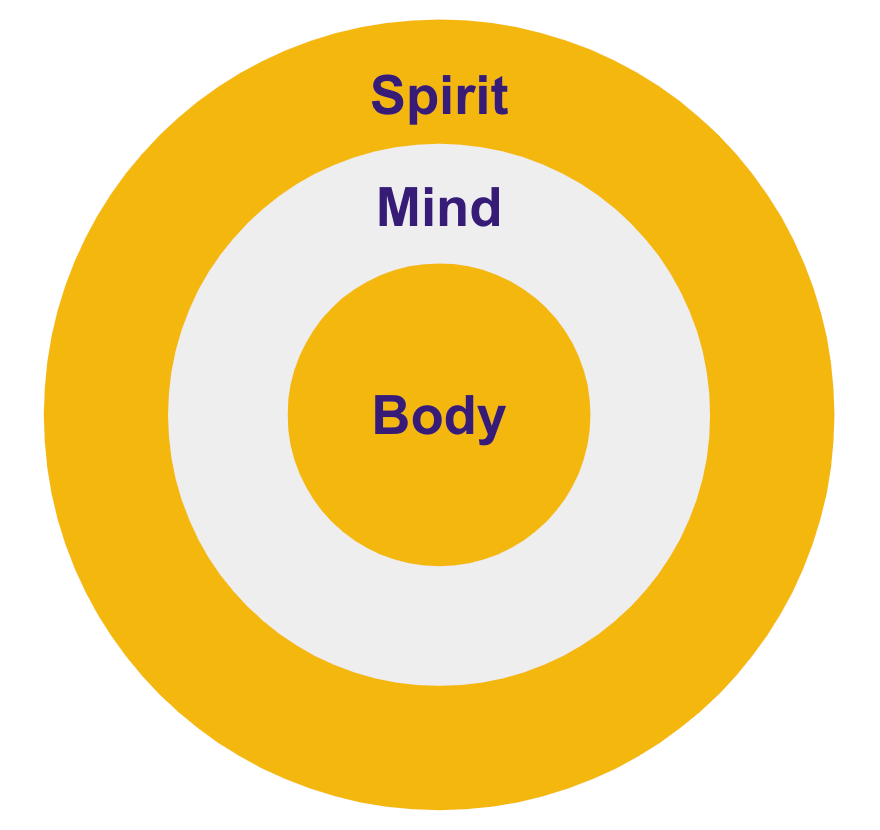
I also recommend you include shadow work as part of an integrated program.
While everyone is different and will create their plan to suit their needs, there are certain areas I believe to be foundational (for at least most people).
Research shows that cognition is “necessary but insufficient” for other lines of development. For example, just because you have well-developed cognition doesn’t mean you’ll have moral intelligence.
One way to improve your cognition is to read books that challenge your understanding.
EI is, arguably, as important as cognitive development. EI relates to your physical and mental health, the quality of your relationships, and your leadership abilities (including self-leadership).
One way to grow your emotional awareness is through meditation training. In the context of your personal development plan, meditation is a skill-building exercise. You are developing the skill of attention.
Your level of self-awareness and knowledge of yourself influences your behaviors, moral development, and psychological development.
The Enneagram system can support the development of intrapersonal intelligence. Another way is to practice self-reflection and journaling.
Your awareness of your body defines the degree of your connection to your instinctive self. The more connected you are, the more mental balance you experience (and vice versa).
You can develop your body intelligence through practices like Yoga and Qigong as well as dancing and functional training. You can also use centering exercises, grounding techniques, and Zhan Zhuang to increase body awareness.
Of course, there are other important aspects of your development. I singled out these four because they influence so much of our behaviors and decisions. Also, many of us are unaware of the profound role they play in our life experiences.
One thing I’ve observed in working with high-performing individuals is they tend to focus only on professional goals.
Many of us want to profit from our self-development plan. I’m not suggesting there’s anything wrong with that. Developing your abilities and talents should make you more marketable and of greater value to others.
However, watch the tendency to invest exclusively in this area, denying other aspects of yourself that are still important to a deeper part of you.
If you create a diverse personal development plan, you’ll increase your chances of actualizing your plan. You’ll also find it to be a more rewarding experience.

Excellent books like Daniel Coyle’s The Talent Code and Anders Ericsson’s Peak: The New Science of Expertise show that talent isn’t born but cultivated through deliberate practice.
Once you have selected the areas of your Personal Development Plan, the next step is to determine your practices.
These practices are the actions you are committing to doing consistently to develop in your particular areas of interest.
For example, if you want to improve your writing, write at least 1,000 words every day and edit what you write ruthlessly.
Want to learn to play the guitar? Pick up your guitar for at least 15 minutes every evening.
Want to increase your strength? Determine your training routine and follow through three or four days per week.
You may not know what practices to follow in the beginning. At first, you’ll research different topics through books, videos, and articles.
This exploration will help you to pick your practices. You may also consider hiring a coach or trainer to help you establish your practices.

Another common mistake people make with their personal development plan is to set BIG goals.
Big goals are useful for businesses but suboptimal for your self-development plan.
A big goal might be to master a particular instrument within 12 months. Such a goal will go unrealized.
As Sun Tzu wrote in The Art of War, “Every battle is won before it’s ever fought.”
To win the battle for your development in the war of distraction, set mini-goals instead.
Mini goals help you build momentum because they’re more readily achievable than big goals.
Yes, have a big vision. But only set mini personal development goals that are fun, engaging, and manageable.
Instead of mastering an instrument, for example, perhaps you establish a mini-goal like learning how to read sheet music or comfortably playing your favorite song.
If you’re just starting with strength training and you can only do ten consecutive push-ups, perhaps you set a goal of 30 push-ups.
If you want to improve as a public speaker, maybe you set a mini-goal to speak in front of a crowd at least once a week.
If you’re getting into meditation, and you can’t sit comfortably for more than a few minutes, maybe you commit to sitting for just 2 minutes once or twice a day for the next 21 days.
These types of personal development goals will inspire your practice and help you build positive momentum.

Once you know your practices, ensure you block off sufficient time for making progress.
Many people struggle with scheduling for two primary reasons:
Watch out for both of these common patterns. If you don’t honor your time, I can assure you, no one else will.
So first ask, How much time can I reasonably commit to my personal development plan?
The question isn’t what you should do; it’s what you think is reasonable and practical in the course of your busy life.
This infographic from Inc. illustrates how 500 chief-level executives spend their day. The average business leader invests 30 minutes a day in personal development—right before bed.
For most people, the two easiest periods to carve out time for your personal development plan are early morning and late evening.
Both of these times share the same two qualities:
The key is to find times when you can be consistent and then establish a daily rhythm with your practice.
This way you don’t have to make a daily decision of whether or not to practice. You just practice!
Just 10 to 15 minutes is sufficient when you have a busy schedule. On the weekends, you can carve out additional time.

Feedback facilitates the learning process. Athletes and musicians excel when they have experienced coaches to provide the right practices and effective feedback.
In Daniel Coyle’s examination of exceptional talent, he found that having a masterful coach was one of the common denominators for producing talent. 3 Daniel Coyle, The Talent Code, 2009.
One reason many people fail to develop is because they have a fixed mindset. Individuals with a fixed mindset are more driven to avoid looking foolish than by the desire to learn. They evade any constructive or critical feedback from others.
In contrast, someone on the path to self-mastery accepts failure and mistakes as part of the learning process.
In The Art of Learning, chess master and tai chi champion Josh Waitzkin explains how he became a tai chi champion by challenging superior opponents.
Instead of sparring with opponents of equal or lesser ability, he sought more skilled martial artists. He was often defeated, but he learned quickly.
Other than outside feedback, the other key to monitoring your progress is to increase your awareness as you practice.
The goal is to become fully present-minded with your practice. (To assist in this process, try using something like The Mastery Method to increase your mental alertness and self-awareness.)
When you bring more awareness to your practice, you ignite an internal feedback loop that facilitates faster learning.
One way to develop greater awareness is through mind training.
Breathing techniques and meditation help develop parts of the brain (prefrontal cortex region) associated with awareness.
It’s also important to enter a centered state before you practice. It only takes a minute or two, and it will speed up your results.
Finally, check in with your personal development plan often.
Scan it weekly and revisit it each month to see if there are any adjustments you want to make.
Are you making progress toward your personal development goals? If not, why not?
Evaluate and make course corrections as needed.
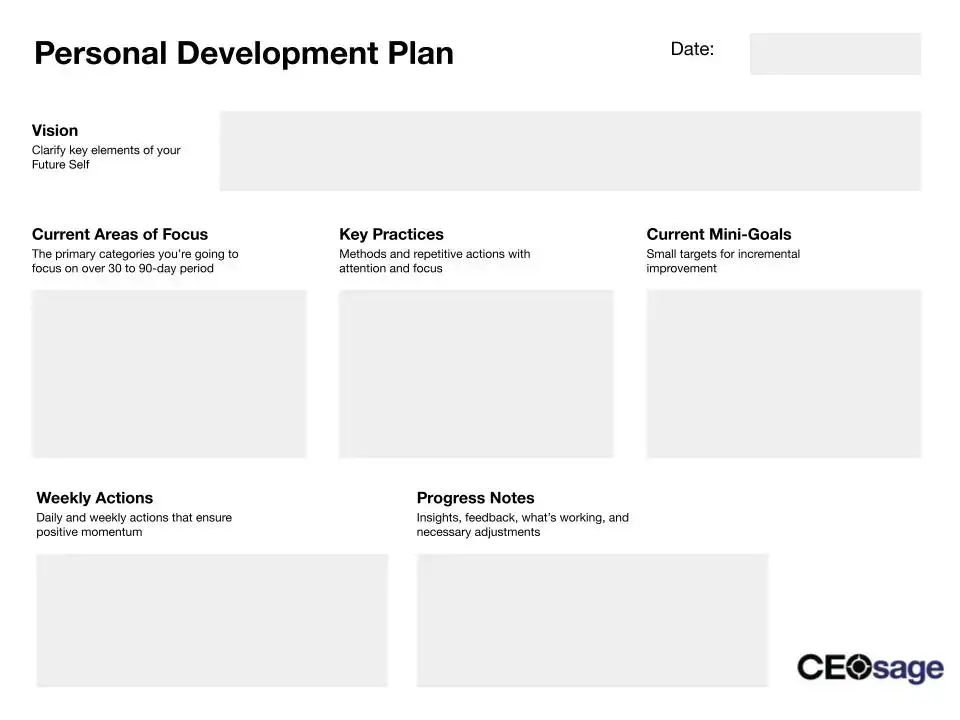
Personal Development Plan Template
To help you create your plan, I’ve designed a personal development plan template based on the roadmap and principles outlined above. The template is fillable.
Your free kit includes:
Download your free personal development plan kit below.
Note: After you enter your email, you’ll be redirected back here. Links to your free assessment templates will be right here.
If you would prefer to create your own template, it’s easy to do. Just include the following elements we just discussed:
All of this information can fit on a single-page template. It will take effort to set up your plan, but once you do, it requires little energy to maintain and update.
Ready? It’s time to create your own Personal Development Plan.
It’s important to keep your personal development plan as simple and concise as possible.
The more complicated and robust your plan becomes, the less likely you are to follow through.
For years, I kept my plan on my desk. A 10-second glance at the document was often all I needed.
I used to help my clients create elaborate results plans that often grew into large report-sized documents. We found they were less functional the bigger they became. Eventually, we reduced these plans down to a single page.
Keep your plan to a single page if possible. A one-page personal development plan makes it easy for you to check in often.
First, here are a few excellent personal development books cited in this guide:
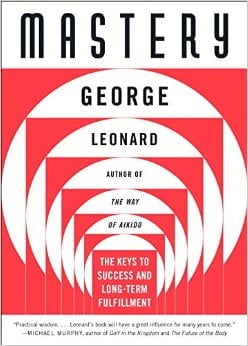
Mastery by George Leonard
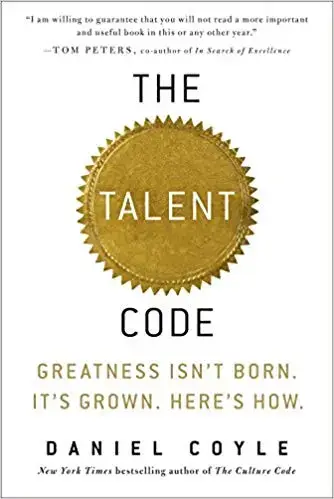
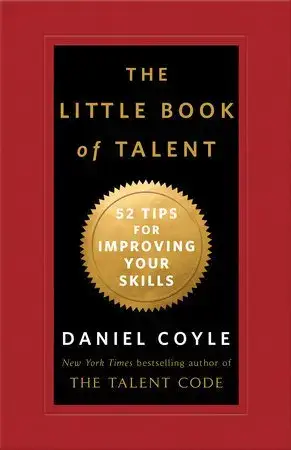

From my experience, the most neglected step in creating a Personal Development Plan is understanding the terrain of human potential—what I attempted to summarize in Step 1.
Here are a series of books that opened my mind to greater possibilities years ago.
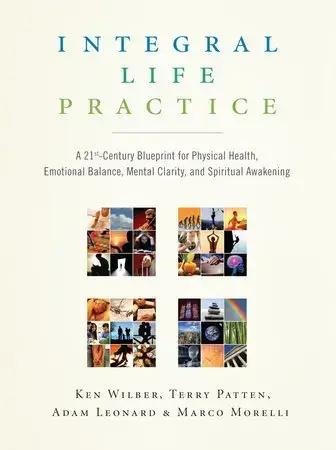
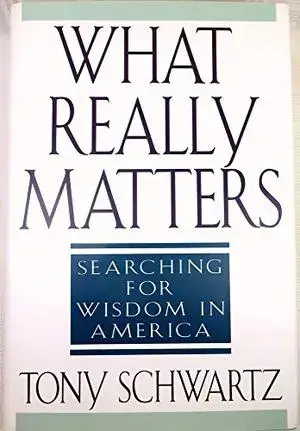

The Life We Are Given by George Leonard & Michael Murphy
Scott Jeffrey is the founder of CEOsage, a self-leadership resource publishing in-depth guides read by millions of self-actualizing individuals. He writes about self-development, practical psychology, Eastern philosophy, and integrated practices. For 25 years, Scott was a business coach to high-performing entrepreneurs, CEOs, and best-selling authors. He's the author of four books including Creativity Revealed.